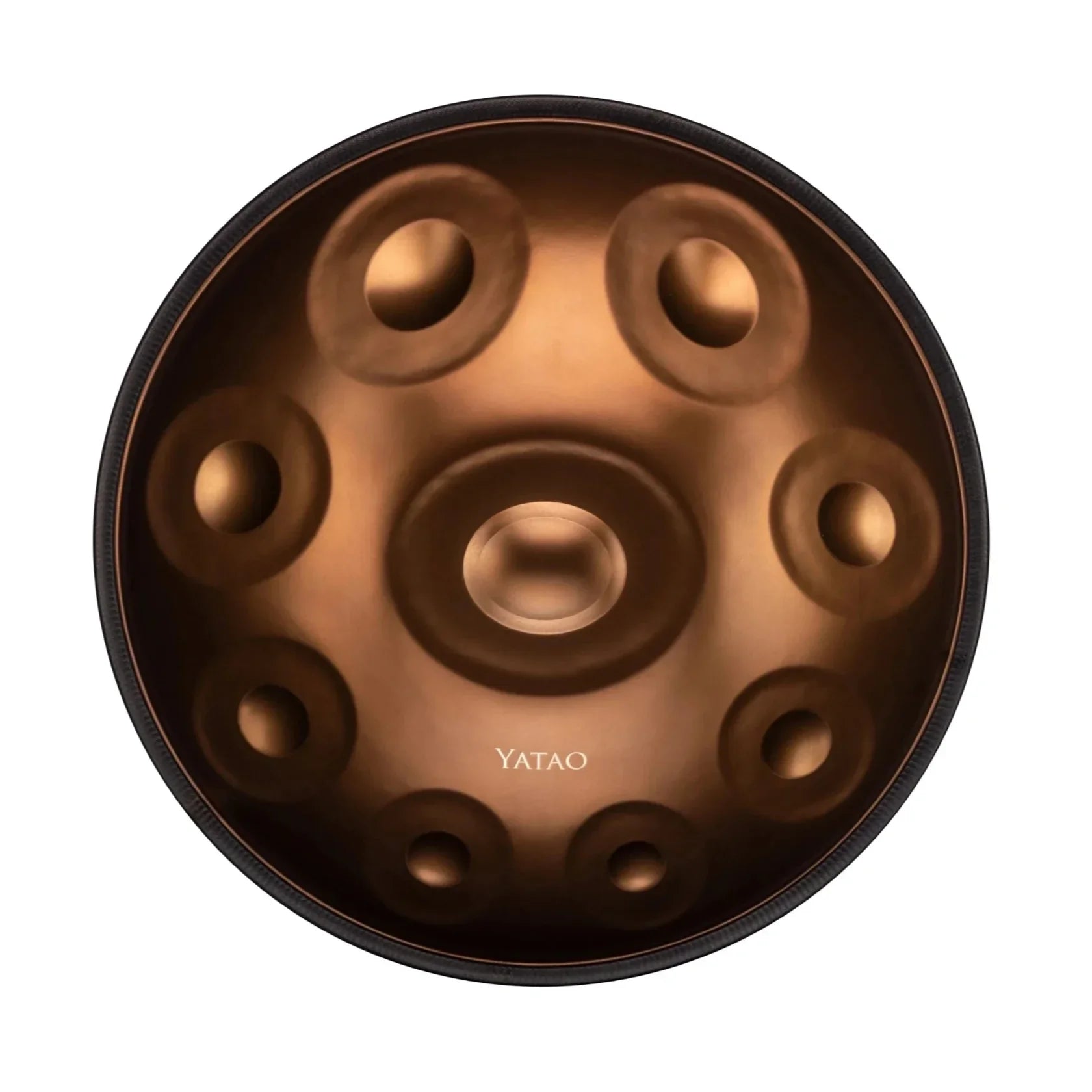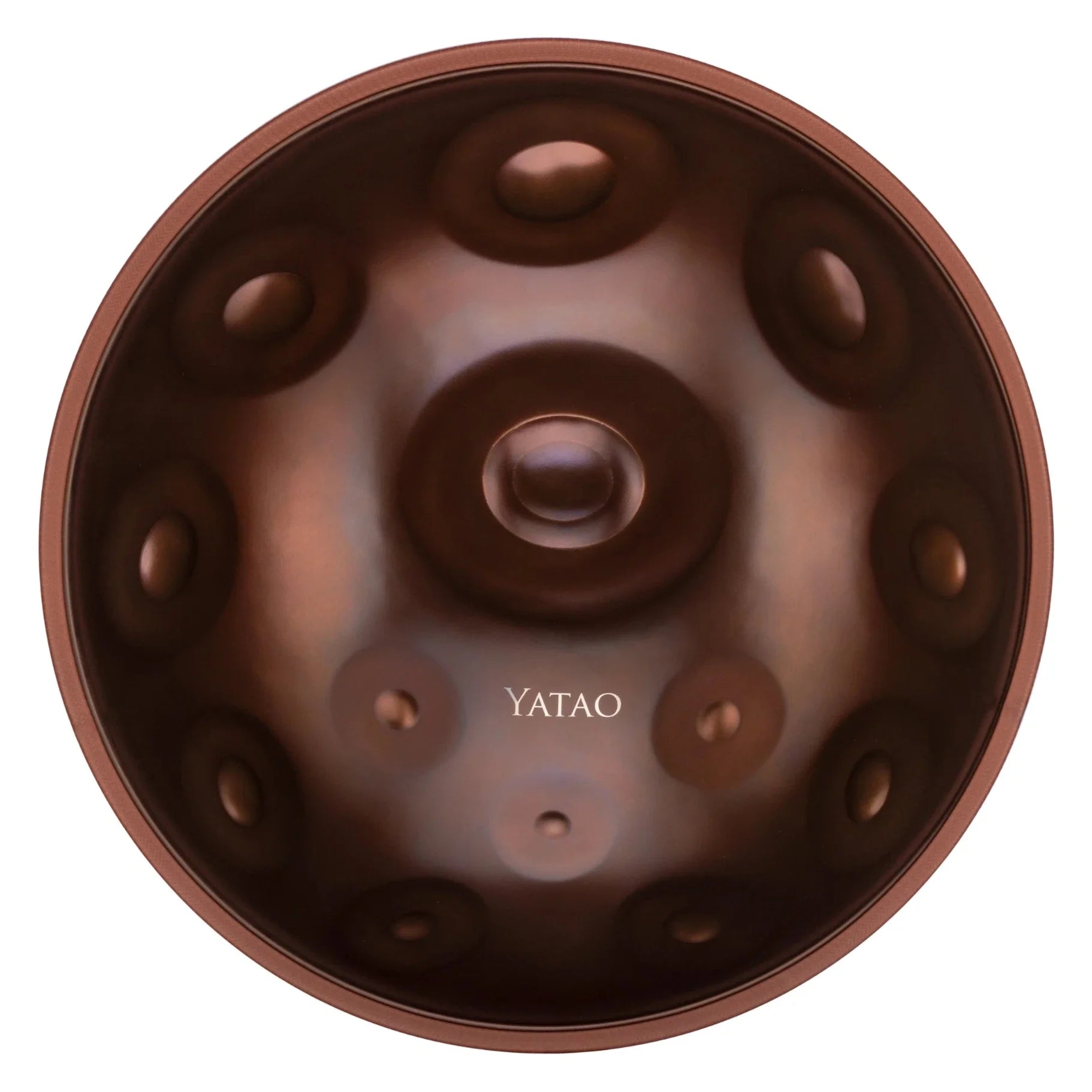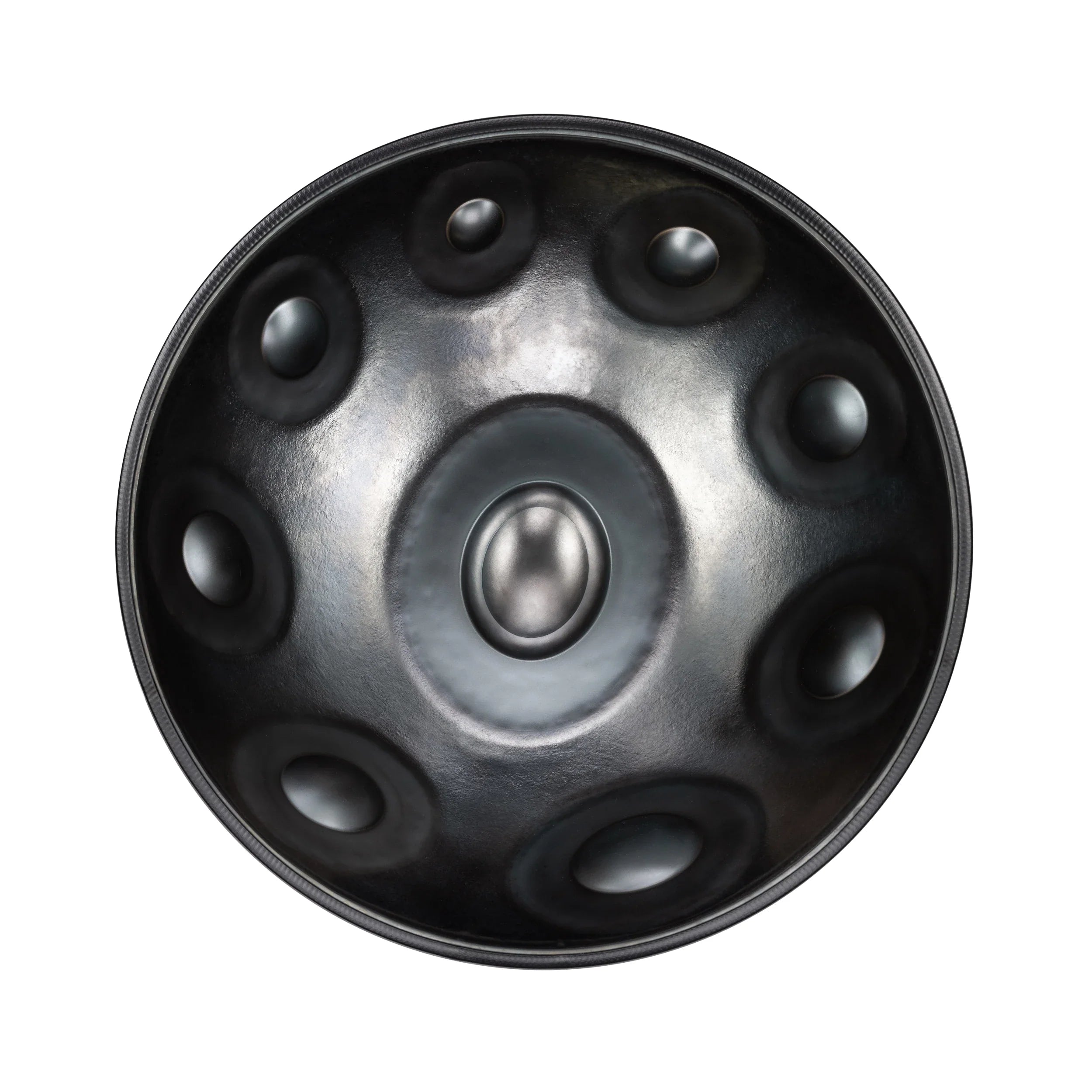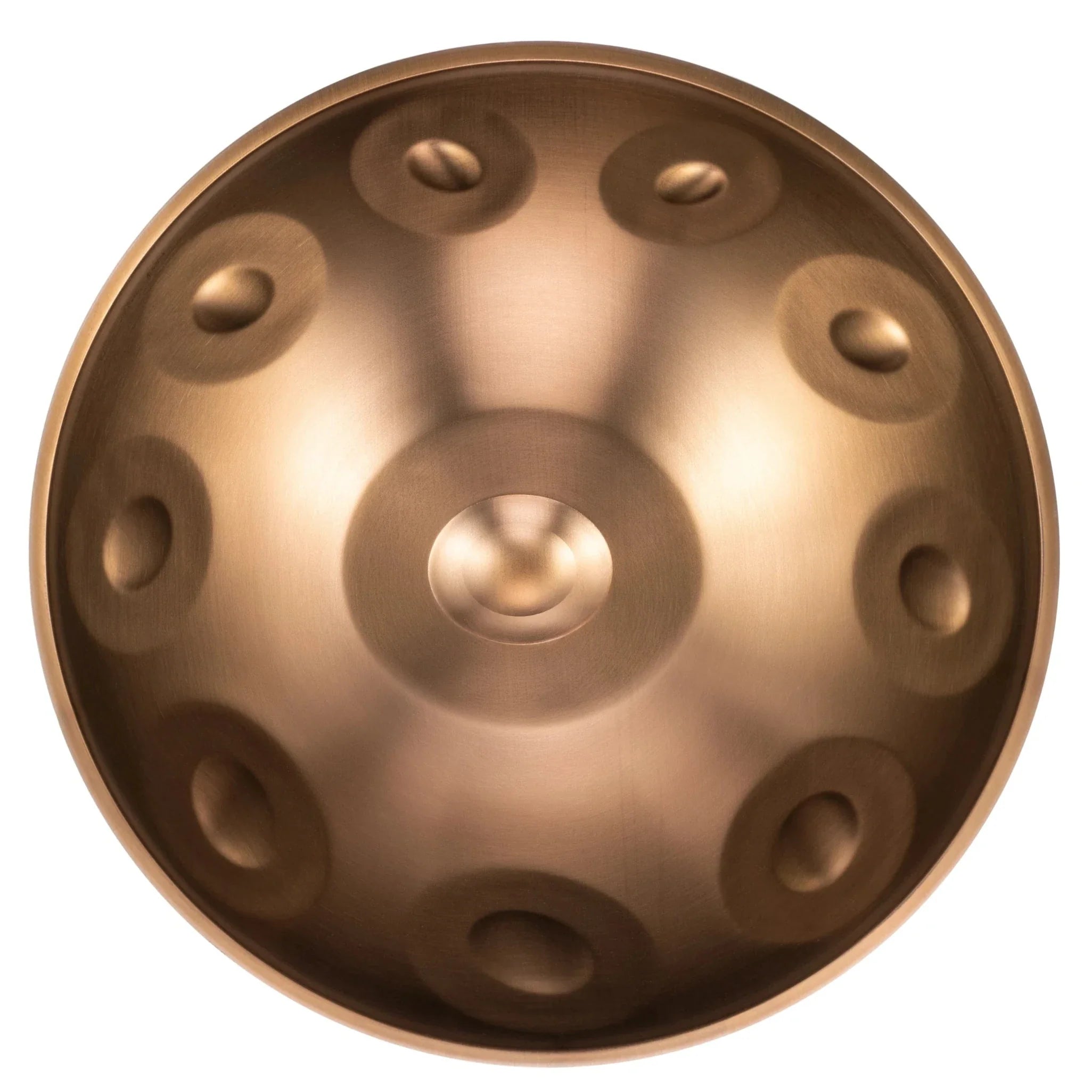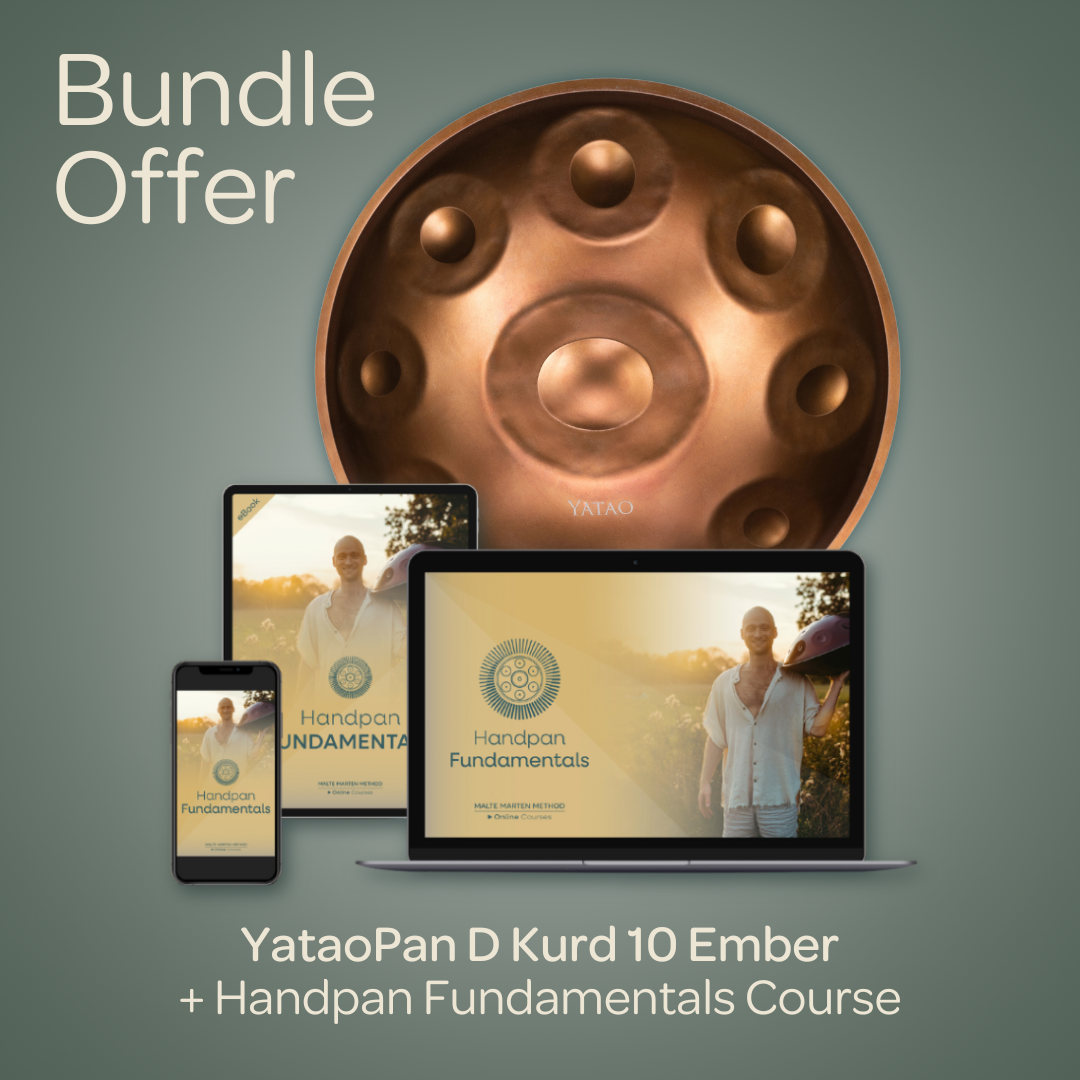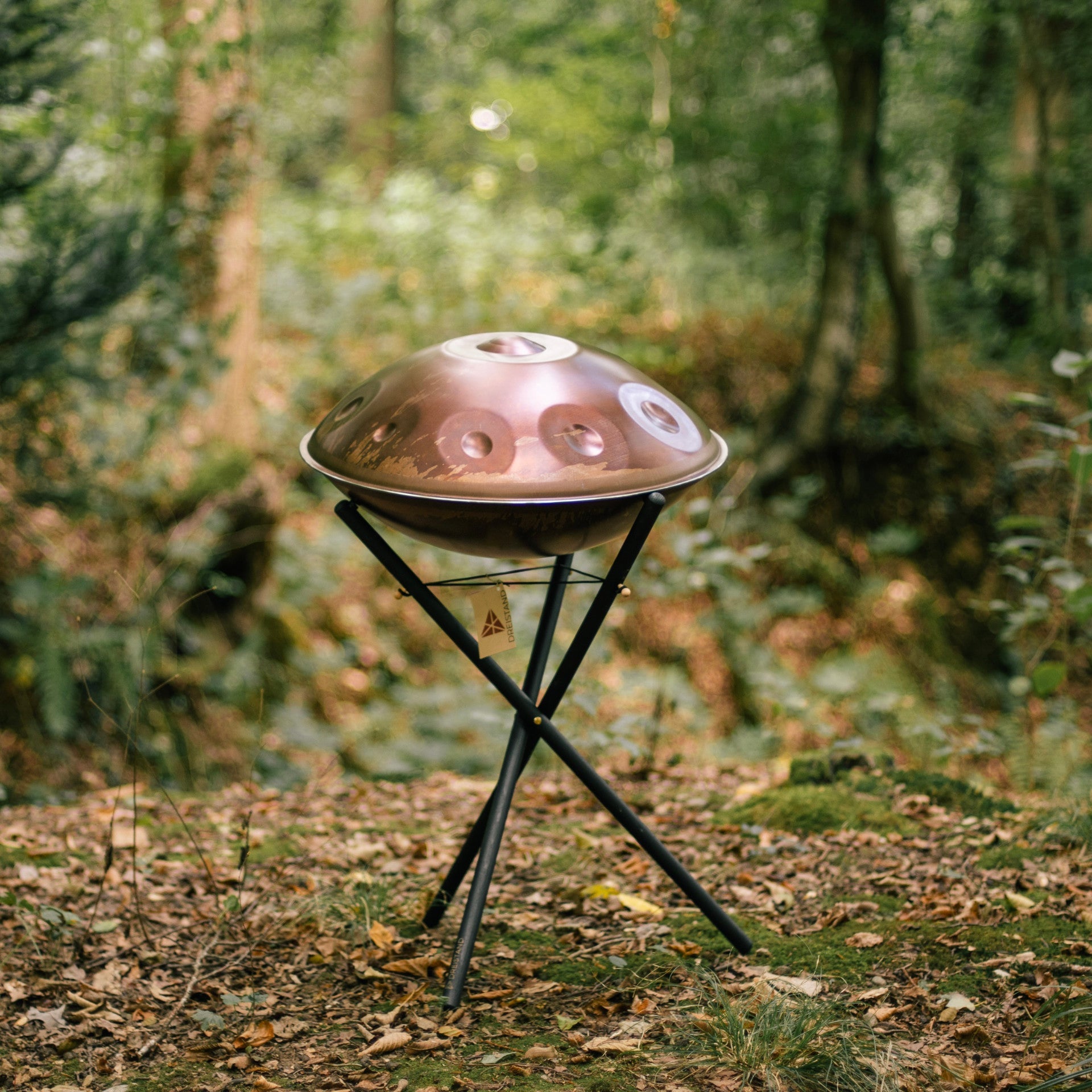Frequently Asked Questions

Support Email
Find answers to frequently asked questions here. Need more help? Just email us at info@yataoshop.com!
1. Shipping and Delivery
Don't worry, we are used to pack and ship handpans, also overseas! To ensure even more protection each Handpan is sold with our Yatao softbag. You can also choose to upgrade to our Namana soft and hard cases, but this is not required for the shipment. Please be aware that shipment to a destination outside of Europe will require customs registration and thus may take a longer time period.
We ship with DHL and insure each package with at least 2500,-€. Read more about our shipping policies.
Generally speaking, the package size is around 60 cm x 60 cm x 55 cm (23.6 in x 23.6 in x 21.6 in) and weighs 12 to 14 kg (26.5~30.9 lb) depending on the Handpan bag included.
We prioritize minimizing our environmental footprint and actively engage in recycling a substantial amount of packaging materials. Our commitment to sustainability drives us to source the finest materials for our cartons, ensuring the optimal balance between eco-friendliness and product protection during shipping. While we don't reuse cartons to maintain the highest quality standards, we meticulously select materials that align with our eco-conscious ethos, contributing to a greener and more sustainable future.
Shipping costs are calculated at checkout based on the delivery address. Generally speaking, shipping a handpan within the EU is approximately 100 Euros or less, whereas outside the EU is 100 Euros or more. You may find more references under the shipping policy section during checkout. Shipping costs for accessories only are much less and as little as 5 Euros depending on the item.
All Handpans are shipped with DHL and are always shipped with insurance up to at least 2500,- €.
Yes! You will get an email notification with the tracking number as soon as the package leaves the warehouse. Typically, this takes no longer than 2 days from placing an order.
In general shipping times are:
-
EU: 3 - 7 working days
-
US: 2 weeks
-
Canada, Australia, Japan and other countries overseas: 3 weeks
Generally speaking, the shipment will be arranged no later than 48 hours after the order payment is received, and a shipping confirmation email including the tracking number will be sent to you. For orders placed from outside the European Union,the process to arrange a shipping typically takes between 3 to 4 working days. However, please be aware that while we’ll do our best to handle all orders with the utmost efficiency, sometimes delays occur due to global events out of our control such as pandemic outbreaks, natural disasters, and so on. That said, we’ll do our best to work through difficulties to get your orders delivered as quickly as possible, and we thank you sincerely for your patience and understanding in the meantime.
2. Returns, Refunds and Warranties
We offer a 12-months full warranty for retuning on all YataoPans. This means we will cover the shipping, insurance and retuning costs in the first 12 months if the service is determined to be necessary. We will still support our customers after this period, please contact us for more details.
For all other Yatao-Selected handpans offered by our marketplace, generally speaking the most makers offer the retuning service for free for an extended period of time, but the customer may have to cover the shipping costs. You can contact either us or the maker directly to discuss retuning needs.
Yes, if the customer meets all these requirements:
-
The customer requests a cancellation within 30 days of purchase and makes reasonable efforts to return the product within this time period
-
The customer is a natural person who concludes a legal transaction for purposes that is not predominantly attributed to neither his commercial nor his independent professional activity
-
The customer and the delivery address is within the EU
If all conditions are met, a refund will be returned to the payment method used to make the original purchase. Please note, we may refuse to make any refund until we have received the goods back in its original condition, or until you have provided proof that you have returned the goods, whichever is earlier; The customer covers the return costs if any.
At the core of our values is a commitment to making the dream of owning a Handpan, one that truly resonates with you, a reality. We believe in the power of music to bring joy, and we want to ensure every Handpan enthusiast finds the perfect instrument that harmonizes with their spirit.
However, we understand that sometimes expectations might not meet reality. If, for any reason, you find yourself dissatisfied with your Handpan, we offer the possibility to cancel the purchase. We value open communication and believe in understanding the unique circumstances that led to this decision.
Please keep in mind that we do reserve the right to decline a refund for purchases made from countries outside the EU. We aim to maintain fairness and sustainability in our operations while striving to offer the best service to our global community of Handpan lovers.
If you have already received your Handpan and need to initiate a return, kindly note that the return shipping costs will be the responsibility of the customer in all cases. Our goal is to ensure that your Handpan experience is as smooth and delightful as possible, and we appreciate your understanding and cooperation.
3. Ordering
The pricing structure depends on the country of your order. If you order from a country within the EU, all prices will include the local VAT rate. However, if you order from outside the EU, our prices will not include VAT or any other taxes.
In short: Yes! We are very happy to serve customers from all over the world. If your country is not available at the checkout , please get in touch!
Please be aware that there may be additional import custom charges in your country that you may need to cover., including the US, Canada, and more. We can assist but are unable to give exact information for every country.
All products we offer are either currently in stock or will be in stock within a clearly specified timeframe. However, it can happen that certain products are sold out. Since we have permanent cooperations with our partners, all handpans or equipment products will be available again in the foreseeable future! To stay informed about new products, follow us on social media or subscribe to our newsletter.
A Pre-Sale means that you are purchasing a Handpan before it is ready for immediate dispatch. The Handpan is still in production, but you secure your instrument in advance. Each Pre-Sale Handpan comes with an exact shipping date or a specified timeframe for dispatch (meantioned in the product description). This ensures that you know when to expect your instrument while also guaranteeing your place in line for a high-quality, handcrafted Handpan.
4. Understanding Handpans
Handpan, Hangdrum, Handtrommel, Pantam, Steeldrum, Spacedrum or just UFO? There are too many names of this instrument in circulation to be able to name them all. First of all, Hang ® (pl. Hanghang) is a patented description which can only be used by and for the first version manufactured by PANart. It is derived from the Swiss-German word for "hand", because unlike the steel drum played with mallets, the "Hang" is played with the hands. Steeldrums were invented in Trinidad in the 1930s and are traditionally made from oil drums. Unlike the convex shaped "Hanghang" they are concave. Names like Spacedrum, Bells, Halo, etc. are the names that other manufacturers gave to their instruments. Due to the fast spread over the internet and the high diversity of names for the instrument, the term "hangdrum" has become established over the years. In the global scene of players and manufacturers, however, "Handpan" and "Pantam" are the two most commonly used terms.
Major and minor keys are defined by their tonic note (their starting or base note) and their scale being major or minor. A major key uses a major scale, and a minor key uses a minor scale. For example a base note D and a minor scale result in an instrument tuned in D minor. For more detailed information we refer to Wikipedia.
The sound of the Handpan is generated by the vibration of the different membranes/sound fields that are incorporated on the surface of the tone. The larger the tone field, the deeper the sound, the smaller the tone field, the higher the sound.
The two steel shells glued to each other form a Helmholtz resonance body through the hole in the lower shell ("Gu"), which amplifies the sound of the entire instrument and is largely responsible for the far-reaching and full sound. Usually Handpans are tuned to 440 Hz, which is the contemporary concert pitch. Some instruments are tuned to 432 Hz, while others are tuned freely and without tuners (e.g. the Free Integral Hang). Unlike the chromatic steelpan, Handpans are tuned in a specific key. The fundamental, octave and fifth of the fundamental are tuned to each membrane. This peculiarity gives the Handpan its deep and rich sound characteristics.
No. Most Handpans are diatonically tuned. Diatonic means that in contrast to chromaticism (on the piano all white and black keys) there is only one specific tone spectrum. This means that with a Handpan in D minor, you can really play only D minor and is limited to those at least 8 tonal areas that adorn the instrument.
The complicated part starts with the different scales. For example, there is not only a D minor scale, but also various versions of the key. The intervals existing on the Handpan are changed. As we can see in the following example, both of the scales presented begin on the fourth (A) in the ring. The scale "Kurd" goes well-behaved up all the natural note jumps of the D minor scale, whereas the scale "Celtic" omits the sixth, the "Bb".
Complete d-minor scale:
D, E, F, G, A, Bb, C
"D Kurd 8” scale:
D - A, Bb, C, D, E, F, G, A
“D Celtic 8” scale:
D - A, C, D, E, F, G, A, C
Skala “Mystic 8”
D - A, Bb, D, E, F, G, A, C
There are many different materials that can be used to make a Handpan. The most common steel is a special iron alloy called DC04, and PANArt used their own material called "Pang". A steel that is completely nitrided and has gone through many phases of heating and cooling.
Nitrided steel was the most commonly used steel on the global manufacturing scene because it is easier to work with and is more stable and rust resistant in the end result. Nitrided steel Handpans has a shorter sustain compared to others. Now most makers work with stainless steel, which has become the standard material for Handpans: Great sustain, very stable sound and no rust.
Ember is the newest material developed by Ayasa and in our view the best material: it combines the characteristics of stainless steel (sustain & no rust) with those of nitrided Handpans.
Currently, the YataoPans come in both stainless steel and ember steel. The ember YataoPan is our newest product line made in Europe. YataoPan D Kurd 10 Ember is made from our favorite material and comes with a sweet and open timbre. Fully handmade with love and passion! Listen to it here.
Ember Steel, a variant of stainless steel, imparts a distinctive warmth to the Handpan's sound. With its long, controlled sustain and non-metallic tonal qualities, it's ideal for slow, meditative playing. This material's resonance and responsiveness make it a favored choice among those who appreciate its stability, preventing overblowing when playing vigorously.
What makes Ember Steel special is that it doesn't sound like metal. Some Handpans can sound a bit bright and shiny, but Ember Steel has a softer and more natural sound. It's great for creating peaceful and down-to-earth music.
Stainless Steel Handpans are celebrated for their bright and vibrant sound. They are often louder than nitrided steel counterparts and can sustain notes for an impressive 4-6 seconds. This extended sustain makes them suitable for slow, meditative playing styles.
However, their pronounced sustain may not be as well-suited for other musical genres or techniques. For instance, if you're looking to play fast and intricate melodies or engage in percussive techniques that require quicker note decay, you might find that Stainless Steel handpans are better suited for slower, more meditative compositions.
Nitrided Handpans are recognized for their distinctive sound properties, which are a result of the nitriding process applied to the steel. Nitriding is a surface-hardening treatment that enhances both the durability and the tonal qualities of the Handpan.
One key characteristic of nitrided handpans is their ceramic-like sound. This quality creates a hauntingly beautiful and ethereal tonal palette. When you play a nitrided handpan, you'll notice that the notes have a somewhat mystical and enchanting quality. This unique sonic character appeals to players looking to create music with an otherworldly and captivating allure.
Additionally, nitrided handpans typically exhibit relatively shorter sustain compared to handpans made from other materials like stainless steel. Sustain refers to how long a note continues to resonate after being struck. The shorter sustain of nitrided handpans can lend itself well to certain musical genres and playing techniques that require quick note decay.
Ember Steel is an alloyed stainless steel that is given its golden/red-golden colour by firing in a kiln. The firing process takes place at approx. 400 °C. This temperature is required for the Handpan to achieve its full sound characteristics. The higher the temperature, the darker (redder) the colour of the instrument.
At approx. 360 °C, the alloy begins to change from a golden colour to a red-golden colour. The colour changes are accompanied by a change in the chemical form of the alloy. The golden colour is completely stable and subsequent discolouration of the instrument is virtually impossible. The reddish colour, on the other hand, is only partially resistant to corrosion. This means that the chemical form of the alloy can be further altered by the effects of salt, water and oxygen. This altered form is then no longer golden, but silver in colour.
It is important to note that no material is removed, only the light reflection properties of the top alloy layer of the Handpan change. This optical change can be slowed down by regularly oiling the Handpan. This removes salts, grease and water from the surface and applies a protective oil film.
5. How to choose a Handpan?
Should you go for a 10, 13 or even 19 note handpan? One thing right from the start: The number of notes a handpan has does not determine if the handpan is superior or inferior. Every correctly tuned Handpan sounds breathtaking with a little technique and practice!
In general, it can be said that the complexity of an instrument increases with the number of its notes. Complexity refers to two things: first, the range of sound possibilities you get with more notes, and second, the challenge of fully understanding and mastering your instrument.
By using up to 19 instead of 10 notes, completely new and exciting harmonies and sound sequences become possible. You are more versatile and flexible when playing with others, and you can also give your virtuosity a truly new expression.
Of course, an instrument with a higher sound density is also much more demanding to produce. It is not without reason that not every Handpan maker has instruments with more than 14 tones in the portfolio. Therefore it can be generally stated that a more complex Handpan is understandably also more expensive.
All Yataopans and Yatao-selected Handpans have a diameter of 53 centimeters, making them relatively easy to handle while playing. Traditionally, Handpans range from 53 to 56 centimeters (20.8–22 inches) in diameter. While this makes them a fairly large instrument—some might even say a bit unwieldy—it is precisely this larger sound body that creates the characteristic warm and full sound. It’s a special experience to feel the subtle vibrations and resonances spreading across the instrument.
For some time now, various makers have been working on creating the signature Handpan sound with a smaller sound body. These more compact versions are ideal for children, teenagers, or anyone looking for a travel-friendly instrument that is easier to handle. However, not many makers can successfully produce such Handpans.
One special exception is the YataoPan D Kurd 9 Mini, designed for smaller adults and children. Despite its reduced size, it still delivers a wonderful, rich sound. Check the YataoShop for availability on these mini pans!
Handpan prices vary greatly depending on the maker, region, brand reputation, number of notes, and overall quality. However, a higher price does not always guarantee a better instrument. Generally, a 10-note Handpan (with 9 notes surrounding the central "Ding") costs between 1,000€ and 2,000€. Instruments with more notes, especially those with additional notes on the bottom shell, tend to be significantly more expensive due to the complexity of their craftsmanship. The base price usually covers 10 notes, with each additional note costing around 100€–200€ more.
For those looking for a more affordable alternative, Tongue Drums offer a great option. These instruments have steel tongues cut into the surface, producing a softer, slightly muted tone with a longer sustain (reverberation). If you are considering a tongue drum, we highly recommend the MAG Tongue Drum for its beautiful sound quality.
Our Handpan Recommendation for Beginners
Through years of giving workshops, we’ve learned that personal taste varies greatly, and the search for the "perfect" Handpan can sometimes be overwhelming. Instead of overanalyzing, we encourage you to listen to your intuition:
- How do you feel when you hear the sound of a particular handpan?
- Which design speaks to you?
If you’re looking for a great-quality instrument at a fair price, we highly recommend the YataoPan Beginner models: D Kurd 10 and D Kurd 13. These instruments offer an excellent balance of sound quality, craftsmanship, and affordability—perfect for those starting their Handpan journey.
Take Your Time & Trust Your Feeling
Choosing a Handpan is a personal journey. Friends, family, and even we can’t tell you which one feels right for you. Listen to the sound, follow your intuition, and take your time to find the instrument that truly resonates with you.
If you’re a first-time Handpan buyer, we strongly encourage you to consider our YataoPans. The Beginner instruments are the $1,000 range and built with both quality and price in mind. At the Yatao Handpan Shop we believe price levels should reflect the levels of quality. We do our best to offer our Handpans to you without a big margin, so that more music lovers can afford their first Handpan instrument. This is what makes the YataoPan unique.
The short answer is no. The long answer is nooooooooooooo.
According to our friends from Master the Handpan, a rough pricing guide as of 2019, a standard handpan (7-8 notes) from a good maker would cost anywhere between $1,000 to $2,500 purchased new. It goes without saying if you’re looking for more notes, the price goes up significantly if not doubles or even triples. Is it possible to find a fair, second handpan under $500? Only if you’re lucky enough to find a generous first-hand owner who’s ready to part ways with a well-taken care of handpan originally purchased at a much higher price. It is going to be extremely unlikely to find a brand new handpan under $500 that provides lasting good sound quality. Take a look at this video made by handpan player Marcel Hutter, in which he shows you what a 500€ handpan bought from the internet sounds like.
The instrument is relatively new and has only been around for twenty some years. Because of this, top quality Handpans are not mass produced. The handcrafting requires a lot of labor and time, while demand has grown much faster than supply over the years.
The handcrafting of a Handpan is a labor-intensive and time-consuming task, often taking weeks, if not months, to complete. As a result, reputable Handpan builders often have extensive order backlogs, leading to increased demand and higher prices.
Many Handpan companies, including our Yataopans, consist of just a few dedicated individuals, and some are single-person operations. This personalized craftsmanship ensures the creation of unique and high-quality instruments.
While mass production of Handpans does exist and has seen growth in recent years, the inherent nature of such operations often leads to cost-cutting measures in materials and labor. While these mass-produced Handpans may serve as acceptable instruments for beginner-level players, they typically lack the authenticity and enchanting qualities found in Handpans crafted with genuine craftsmanship at their core.
Typically speaking, Handpans come in 440 Hz or 432 Hz frequency, while the first is more popular and widely available. When you listen to the same scale played on Handpans with both frequencies, you'll notice that the Handpan tuned to 432 Hz sounds slightly lower than the one tuned to 440 Hz, almost as if it's 'out of tune.'
This difference in pitch is due to the overall lower frequency of 432 Hz. Interestingly, this lower frequency is actually preferred by a growing number of customers because some people believe that music tuned to 432 Hz has a healing effect.
In practical terms, if you're a solo player, you can choose either frequency based on your personal preference. However, if you plan to play with groups or jam with others, it's important to be aware that a Handpan tuned to 440 Hz doesn't harmonize well with the sound of a 432 Hz pan, and vice versa.
As for the question of why there are different pitches for handpans, it primarily comes down to individual preferences and the perceived effects of different frequencies on the listening experience.
A Handpan tuned to 432 Hz sounds slightly lower in pitch than the standard 440 Hz tuning. Some believe this frequency is more in harmony with nature and has calming, even spiritual effects. While 440 Hz is the modern standard for most instruments, 432 Hz is often associated with sound healing and deeper resonance. Whether you experience a difference depends on personal perception, but many describe 432 Hz music as more soothing and connected to the universe.
6. Learn how to play Handpan
Contrary to many other musical instruments, the Handpan is notably easy to pick up. This holds true for both seasoned musicians and individuals who may consider themselves musically untrained or untalented. One key reason for its approachability is the limited number of notes available on a handpan and its inherent quality of always being harmonious. With a handpan, there are no "wrong notes" to hit, thanks to its well-tempered design. While mastering the precise striking techniques may require some practice, maintaining motivation and enthusiasm throughout the learning process comes naturally. What's more, the Handpan produces pleasing sounds relatively quickly, making it an enjoyable experience for both the player and those fortunate enough to listen.
You don't need prior musical training or knowledge of music theory to play the handpan. Each handpan is tuned to a single musical scale, eliminating the worry of hitting wrong notes. This makes the handpan accessible to everyone, whether you're a seasoned musician or a complete novice.
Many first-time players are pleasantly surprised by how quickly they can make significant progress, unlike other instruments that may take longer to master. This rapid learning curve is one of the reasons why the handpan attracts people from all walks of life. It's a truly fulfilling experience to listen to yourself playing beautiful melodies after only a few months of self-teaching, even if you have no previous music training.
Certainly, there are numerous resources available to support your journey in learning the handpan:
Handpan Workshops:
An exceptionally effective way to learn or enhance your handpan skills is through workshops. Yatao regularly offers brief playing sessions as part of our music tours, providing a glimpse into the experience. For a more in-depth and intensive approach, consider participating in 3-7 day workshops.Workshops by Malte and Alex allow you to experiment with various handpans and make substantial progress in both solo and group play. Both organize these workshops independently, offering special days in comfortable accommodations with delicious vegan cuisine.
Learn to Play Handpan Online:
Online learning has gained popularity, making it a convenient option for those eager to learn. One notable resource is "Master The Handpan" by David Charrier, a seasoned figure in the handpan community. David's well-structured video courses have paved the way for many handpan artists. His online classes provide an efficient and quick way to grasp the art of playing these captivating instruments.
Additionally, we are delighted to present Malte's Masterclass on "Master The Handpan."
If you're uncertain about how to begin with this instrument or simply seek valuable tips to expedite your progress, Malte’s courses are here to assist you on your journey. Together, you will explore various grooves, well-known melodies, the meditative aspects of playing, and, of course, Malte’s approach to improvisation and composition.

